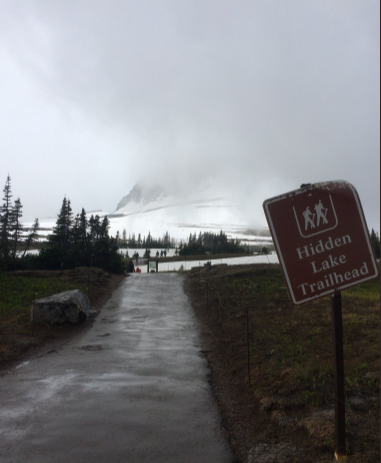Travel
Montana: See the vanishing glaciers and carry bear spray

FILE: GLACIER NATIONAL PARK, MONTANA (Photo: Glacier National Park/Twitter)
GLACIER NATIONAL PARK, Mont. -I had a lot of expectations heading to Montana last summer. I expected to check off my bucket-list dream of driving Glacier National Park’s Going-to-the-Sun Road. I expected to be ready should I meet any bears because I’d brought “bear bells” to repel them. And I was sure I’d love the local meat pies called “pasties.”
Wrong on all counts. The Going-to-the-Sun Road is fully open as of early July but when my husband and I arrived in early September of 2017, much of it was closed due to fires. In addition, the rangers told me my bear bells were more likely to attract curious bears than repel them.
And, sorry, Montanans: I tried one pasty in a cafe and another in a bakery, but for my palate, there’s a reason the word pasty is pronounced so that it rhymes with nasty. The good news: All the other meals my husband and I had were terrific, from a park restaurant to Southern food in Whitefish.
I also found a hidden gem of a museum about Chinese immigrants in Butte, along with a freaky poison lake.
The saddest surprise of all? Glacier Park’s glaciers are melting so fast, the National Park Service predicts they’ll be gone in 12 years.
GLACIER NATIONAL PARK
Driving the Going-to-the-Sun Road was a trip I’d dreamed of for years. Unfortunately my 2017 trip coincided with fires that have become an annual late-summer plague here. Most of the road was closed.
But a wall of mountains kept the eastern part of the park smoke-free, so we headed there. Highlights included the Hidden Lake Trail, where you make your way along a winding path through a vast alpine meadow toward a backdrop of craggy mountains. The hikers appear so small in the open field beneath the looming mountains that it brings to mind one of those Japanese paintings with tiny human figures dwarfed by nature’s grandiosity.
That night, we had an elegant supper at Many Glacier Hotel -including scrumptious bison chili and a huckleberry-flavoured cocktail -before watching the sun set behind black mountain peaks ringing the lake on the hotel’s doorstep. The next morning, we rose early for an 11-mile (18-kilometre) round-trip trek to Grinnell Glacier.
You can cut a few miles off the Grinnell Glacier hike by taking a boat to a trailhead, but we opted to do the whole thing by foot. We set out at dawn, wearing jackets for the chilly morning but shorts to keep our legs cool as the day heated up. The elevation here is 6,500 feet (1,980 metres), including 1,600 feet (490 metres) gained along the trail, but we’d gotten accustomed to the altitude and felt fine.
BEARS AND THE GLACIER
The most unsettling thing about the hike was the sign at the start of the trail: “You are entering grizzly country … There is no guarantee of your safety.” That’s why I’d brought bear bells. Too bad the ranger told me not to use them. Instead, she recommended bear spray, which we bought. Her other tip: Sing, clap and make noise. Bears usually keep away if they hear you. To my husband’s dismay, I never shut up the entire trail. I sang Broadway tunes and “American Pie,” recited Winston Churchill’s “Never surrender!” speech and belted out this “Sound of Music” riff: “The hills are alive with the sound of bear songs.”
In the end, we didn’t see any bears. But we did see mountain goats grazing above us, moose wading in a turquoise lake below, and at the trail’s turnaround point, the thing we’d come for: Grinnell Glacier, complete with floating icebergs. A sobering placard says that the ice sheets are a fraction of what they were 100 years ago and that they are expected to disappear by 2030.
BUTTE
Butte was a mining boomtown in the late 19th and early 20th century. Many of its attractions today speak to that era, like the 34-room Copper King mansion, built in the 1880s by William A. Clark, one of the richest men of his time. Today the mansion is a B&B with guided tours.
Butte’s Mai Wah Museum tells the story of its Chinese community, 2,000 strong at its height. It’s housed in buildings that were part of Butte’s Chinatown, with artifacts from the original Mai Wah noodle parlour, cheongsam-style dresses from a family exhibit and a 1901 directory that listed 35 businesses, from laundries to tailors to drugstores.
And don’t miss the Berkeley Pit. This toxic lake, a mile long by a half-mile wide, was once an open copper mine. Today it’s filled with water saturated with heavy metals and chemicals. For $2, you can access a viewing platform to see the pool with its odd blue-green hue and hear the sirens going off to keep birds from landing. The woman in the gift shop who sells tickets jauntily announces to all comers: “There’s only one rule: No swimming!”
WHITEFISH AND BIG HOLE
We all love trying authentic local cuisine, but after my aversion to pasties, I was open to other ideas. Rave reviews drew us to Tupelo Grille in Whitefish. Wait, gumbo and seafood in Montana? I can only tell you, it was outstanding. After dinner, we hit the Tuesday evening farmers market. It was huckleberry season, with plenty of treats for dessert.
Our final Montana stop: Big Hole National Battlefield in Wisdom. The U.S. Cavalry chased the Nez Perce tribe in a running battle over 1,500 miles (2,400 kilometres) as the Indians tried to flee to Canada in the late 1800s. The tribe camped here by a river and was massacred by soldiers who fired into tipis as they slept. A field of tipis stripped of their covers marks the site. No surprise here: This haunting place will break your heart.





















